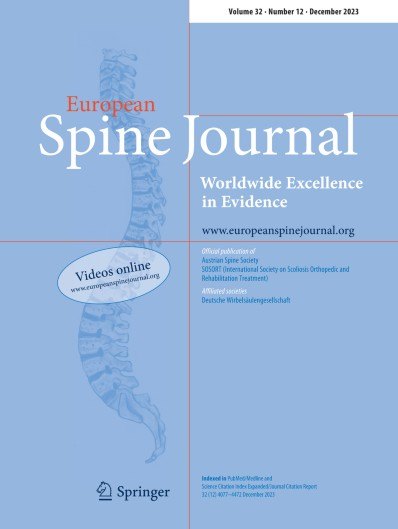
Duloxetine comparable to current pain relief methods in treating chronic low back pain

Duloxetine comparable to current pain relief methods in treating chronic low back pain
Efficacy of duloxetine versus alternative oral therapies: an indirect comparison of randomised clinical trials in chronic low back pain
Eur Spine J. 2013 Sep;22(9):1996-2009Synopsis
Fifteen randomized clinical trials were included in this meta-analysis to compare duloxetine to a variety of other pain medications in the treatment of chronic low back pain. Comparisons between duloxetine and antidepressants, cox-2 inhibitors, non-scheduled opioids, scheduled opioids and other drugs suggested that scheduled opioids were more effective than duloxetine; however, the effect size was minimal and difference was lost when repeated using a random effects model. Before any definitive conclusions can be made regarding duloxetine as an alternative treatment for chronic low back pain, further clinical trials providing direct comparisons are required.
Were the search methods used to find evidence (original research) on the primary question or questions stated?
Was the search for evidence reasonably comprehensive?
Were the criteria used for deciding which studies to include in the overview reported?
Was the bias in the selection of studies avoided?
Were the criteria used for assessing the validity of the included studies reported?
Was the validity of all of the studies referred to in the text assessed with use of appropriate criteria (either in selecting the studies for inclusion or in analyzing the studies that were cited)?
Were the methods used to combine the findings of the relevant studies (to reach a conclusion) reported?
Were the findings of the relevant studies combined appropriately relative to the primary question that the overview addresses?
Were the conclusions made by the author or authors supported by the data and or analysis reported in the overview?
How would you rate the scientific quality of this evidence?
Yes = 1
Uncertain = 0.5
Not Relevant = 0
No = 0
The Reporting Criteria Assessment evaluates the transparency with which authors report the methodological and trial characteristics of the trial within the publication. The assessment is divided into five categories which are presented below.
4/4
Introduction
4/4
Accessing Data
3/4
Analysing Data
4/4
Results
3/4
Discussion
Detsky AS, Naylor CD, O'Rourke K, McGeer AJ, L'Abbé KA. J Clin Epidemiol. 1992;45:255-65
The Fragility Index is a tool that aids in the interpretation of significant findings, providing a measure of strength for a result. The Fragility Index represents the number of consecutive events that need to be added to a dichotomous outcome to make the finding no longer significant. A small number represents a weaker finding and a large number represents a stronger finding.
Why was this study needed now?
Chronic low back pain is a common musculoskeletal disorder that contributes to growing disability rates, and results in a substantial economic burden on the healthcare system. Back pain can be caused by a number of factors, making it very difficult to determine an appropriate course of treatment. The majority of treatment strategies revolve around symptom relief including opioids, nonsteroidal anti-inflammatory drugs, anticonvulsants and antidepressants. Duloxetine regulates the descending pain inhibitory pathways by inhibiting serotonin epinephrine reuptake. This meta-analysis was necessary to make an indirect comparison of duloxetine and oral pharmacological therapies in the treatment of low back pain.
What was the principal research question?
Is duloxetine effective in relieving chronic low back pain compared to opioids, antidepressants, cox-2 inhibitors, and other drugs?
What were the important findings?
- Standardized mean differences were highest in studies assessing scheduled opioid treatment and in a the meta-analysis of 15 studies, the fixed effects model found scheduled opioids to be more effective than duloxetine; however, the effect size presented a less than small magnitude of effect and the difference was not found when assessed under a random effects model. Heterogeneity comparing non-scheduled opioids was 75%, scheduled opioids had a heterogeneity of 79% and all other drug classes had low heterogeneity.
- Meta-analysis using a fixed effects model found that, with the exception of selective serotonin reuptake inhibitors and glucosamine, all drug classes were more effective than placebo.
- Meta-analysis using a random effects model for indirect comparison between drug treatments resulted in antidepressants (SMD=0.28, 95%CI -0.33, 0.89), cox-2 inhibitors (SMD=-0.05, 95%CI -0.40, 0.30), non-scheduled opioids (SMD=-0.13, 95%CI -0.47, 0.20), scheduled opioids (SMD=-0.24, 95%CI -0.55, 0.05) and other drugs (SMD=0.22, 95%CI -0.29, 0.74) being similar to duloxetine (Between study variance = 0.04).
- Pain duration was found to be a covariate according to a sensitivity analysis (SD=0.08, 95%CI 0.06, 0.38), with lower treatment differences observed for patients who had suffered pain for over 6 months.
What should I remember most?
Duloxetine was found to be comparable to antidepressants, Cox-2 inhibitors, non-scheduled opioids and other drugs. Scheduled opioids were found to be more effective in the fixed effects model, however this benefit was not observed in the random effects model.
How will this affect the care of my patients?
Duloxentine did not prove to be more beneficial to patients with chronic low back than other drugs that are currently used. Limitations include a low number of studies for each comparison and a variety of outcome measures used in the studies. Also, these results are based on an indirect comparison, indicating the need for future research that make head-to-head comparisons of duloxetine with other drug treatments.
Learn about our AI Driven
High Impact Search Feature
Our AI driven High Impact metric calculates the impact an article will have by considering both the publishing journal and the content of the article itself. Built using the latest advances in natural language processing, OE High Impact predicts an article’s future number of citations better than impact factor alone.
Continue



 LOGIN
LOGIN

Join the Conversation
Please Login or Join to leave comments.